In figure, the stiffness of the spring is k and mass of the block is m. The pulley is fixed. Initially, the block m is held such that the elongation in the spring is zero and then released from rest. Find:
a. the maximum elongation in the spring.
b. the maximum speed of the block m. Neglect the mass of the spring and that of the string. Also neglect the friction.
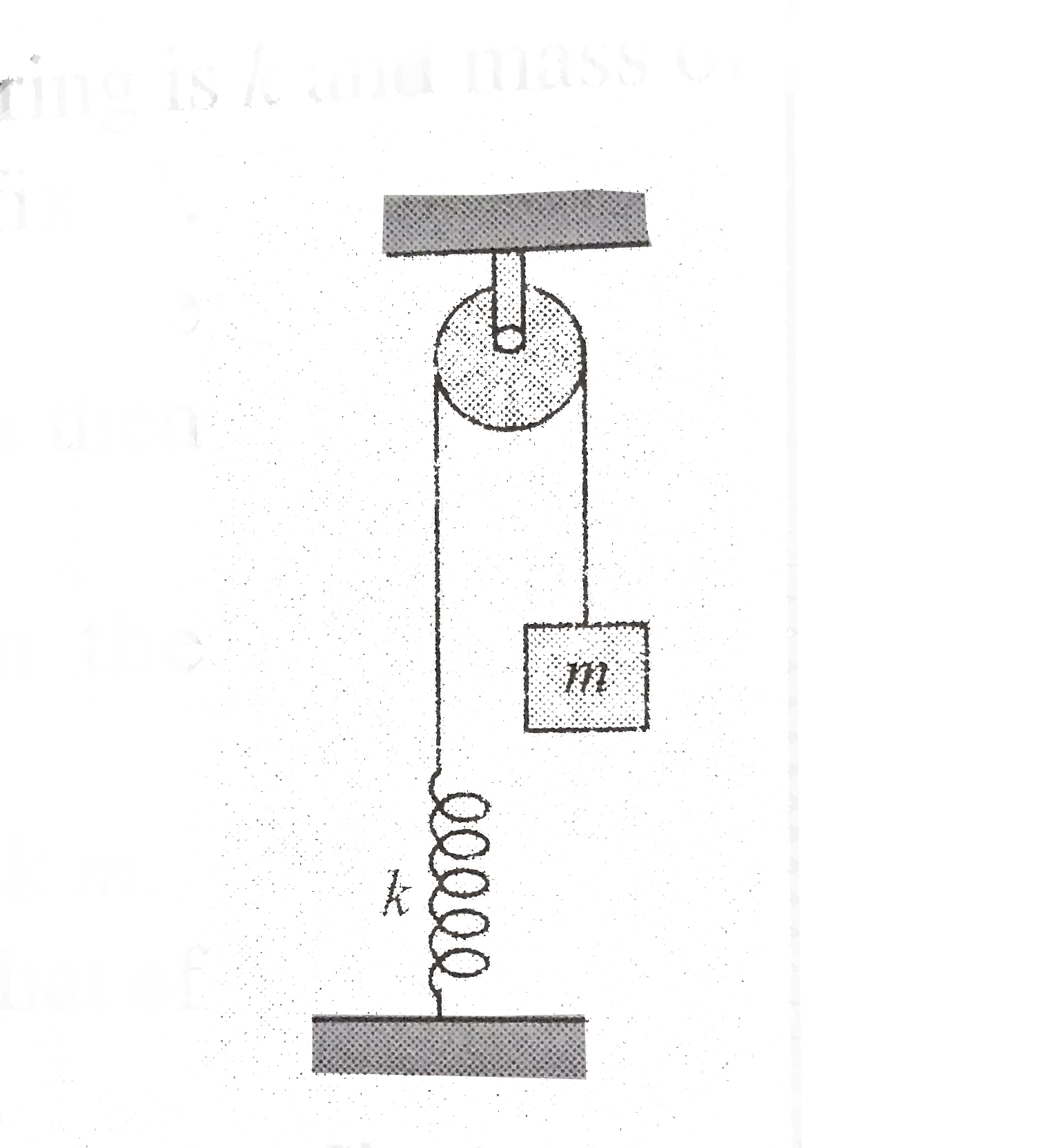
Let the maximum elongation in the spring be x, when the block is at position 2.
a. The displacement of the block m is also x.
From conservation of energy, ΔK=ΔU=0
=12kx2=mgx
⇒x=2mg/k
b. Let maximum velocity occur when block moves a distance x.
Using ΔK+ΔU=0
(12mv2−0)+(−mgx+12kx2)=0
or 12mv2=mgx−12kx2
Differeciating above equations w.r.t. x
12m⋅2v⋅dvdx=mg(dx)dt−12k2xdxdt
mv⋅dvdt=mgv−kxv
For maximum v, dvdx=0⇒x=mgk
So, mg(mgk)−12k(mgk)2=12mv2max
⇒vmax=(√mk)g
Topper's Solved these Questions
- BOOK - CENGAGE PHYSICSCHAPTER - WORK, POWER & ENERGYEXERCISE - Exercise 8.416videos
WORK, POWER & ENERGY
- BOOK - CENGAGE PHYSICSCHAPTER - WORK, POWER & ENERGYEXERCISE - Exercise 8.515videos
WORK, POWER & ENERGY
- BOOK - CENGAGE PHYSICSCHAPTER - WORK, POWER & ENERGYEXERCISE - Exercise 8.225videos
WORK, POWER & ENERGY
- BOOK - CENGAGE PHYSICSCHAPTER - VECTORSEXERCISE - Exercise Multiple Correct5videos
VECTORS
Similar Questions
The block of mass m is released when the spring was in its natrual length. Spring constant is k. Find the maximum elongation of the spring.
 View Solution
View SolutionBlock of mass 2m is given v0 towards the right. If L is the natural length of spring constant k, find the maximum elongation of the spring.
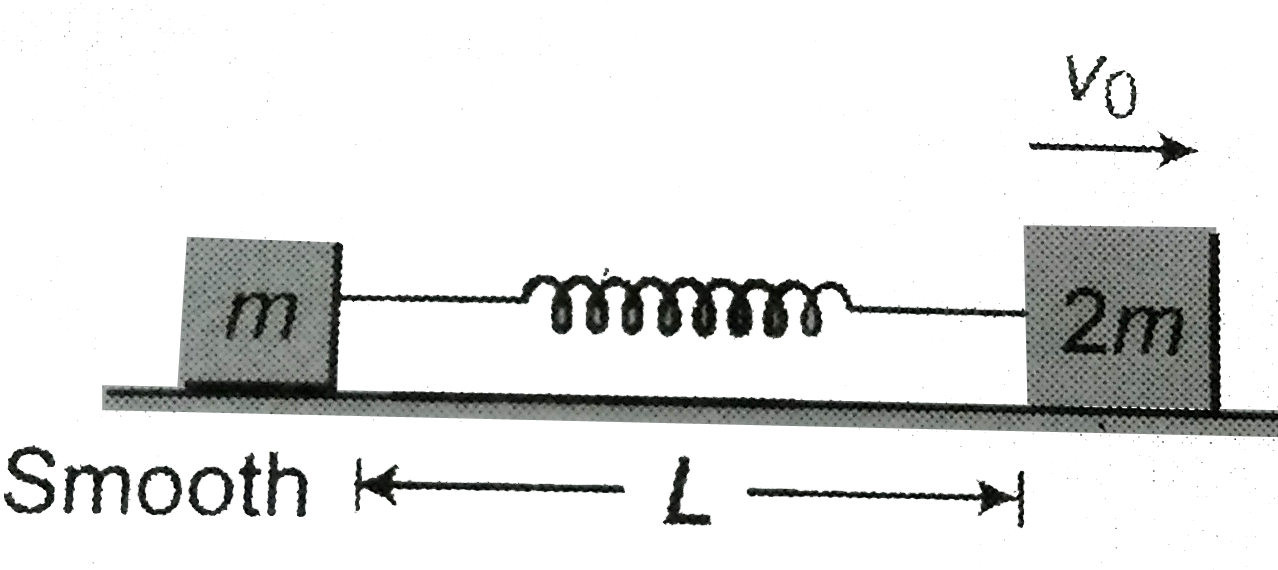 View Solution
View Solution
Knowledge Check
- Question 1 - Select One
For shown situation find the maximum elongation in the spring. Neglect friction everywhere. Initiallthe blocks are at rest and spring is unstreched.
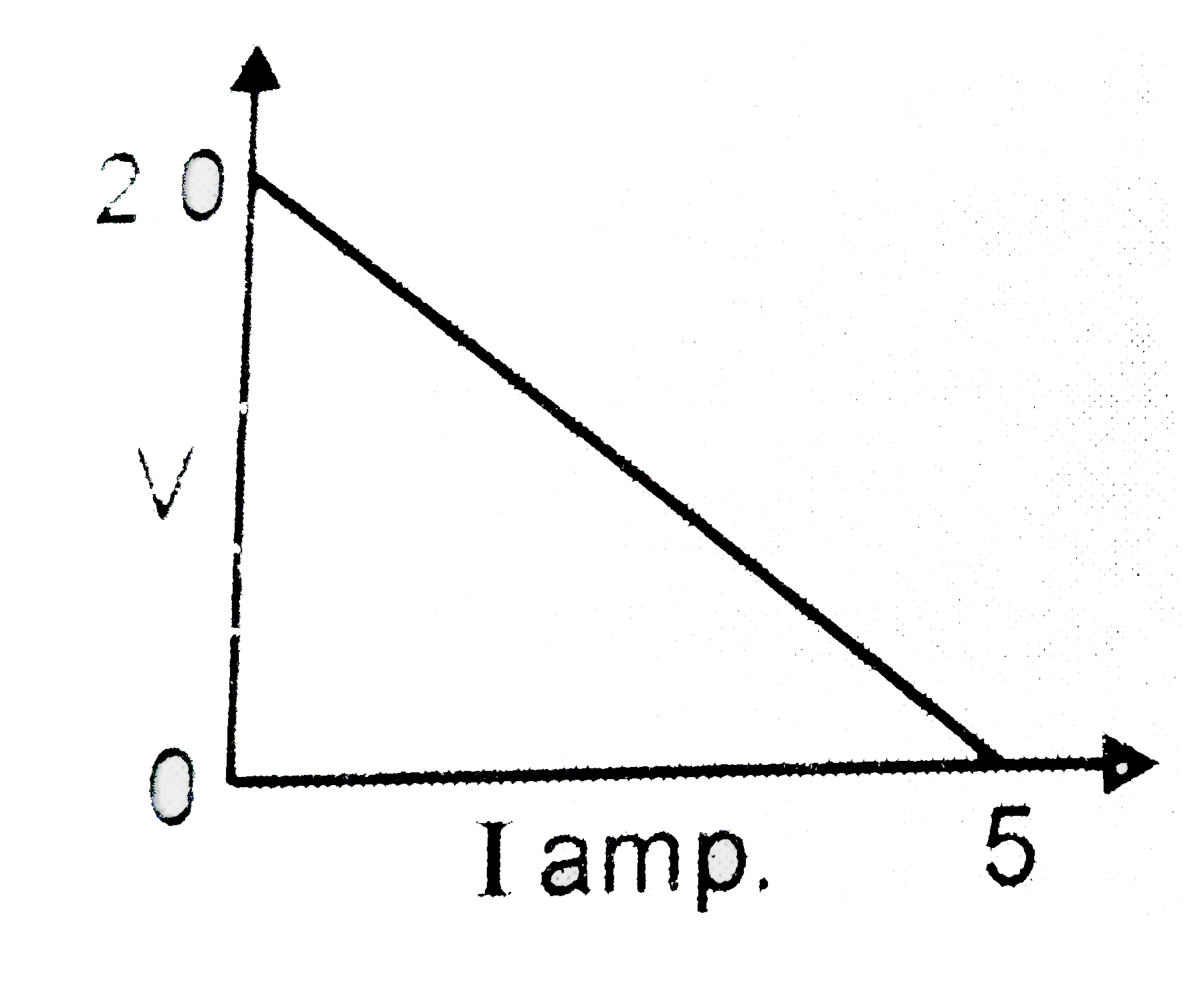 A4F3KB3F4KC4FKD2FK
A4F3KB3F4KC4FKD2FK - Question 2 - Select One
A system of wedge and block as shown in figure, is released with the spring in its natural length. All surfaces are frictionless. Maximum elongation in the spring will be
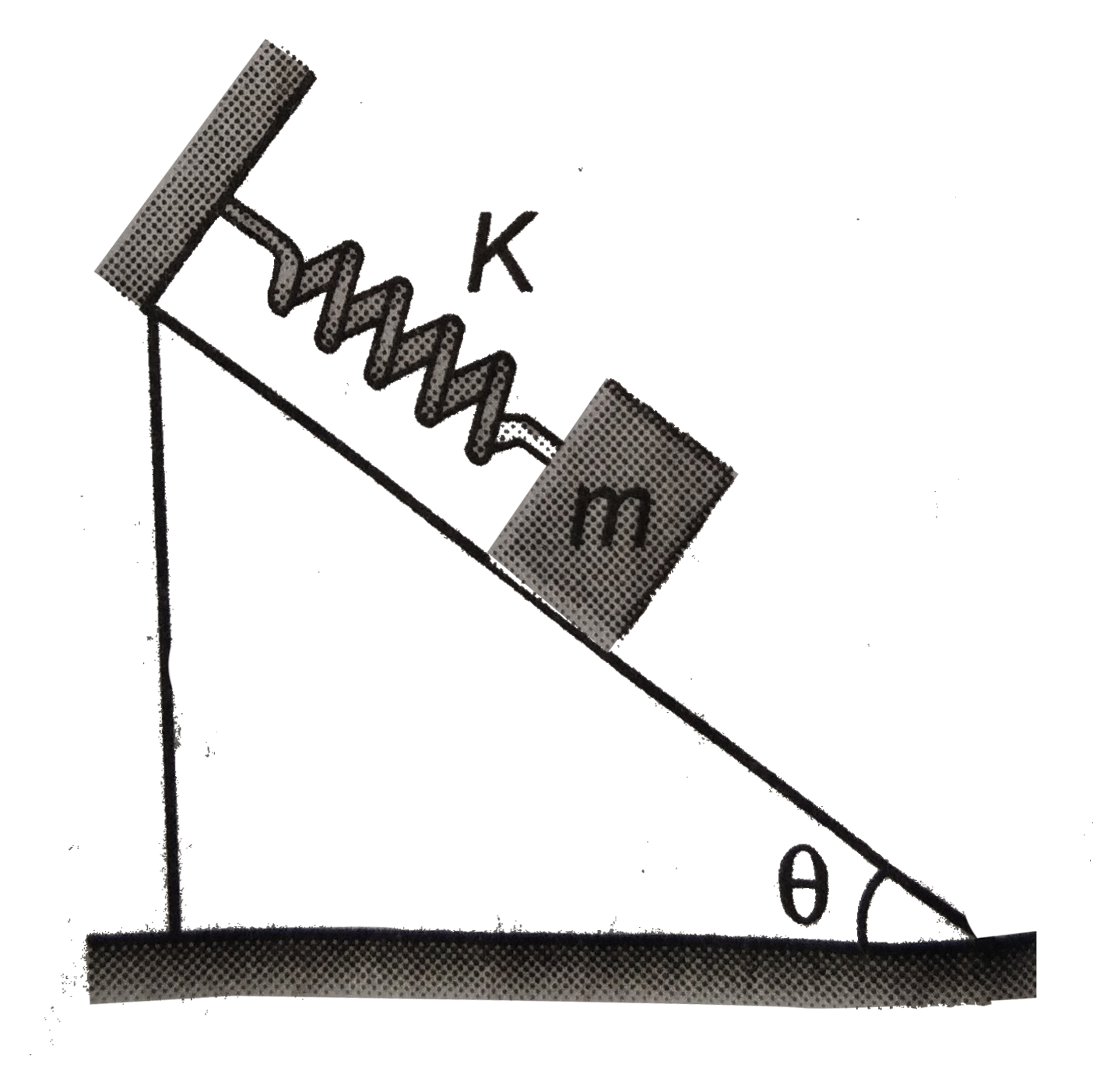 . A2mgsinθKBmgsinθKC4mgsinθKDmgsinθ2K
. A2mgsinθKBmgsinθKC4mgsinθKDmgsinθ2K - Question 3 - Select One
Find the maximum tension in the spring if initially spring at its natural length when block is released from rest.
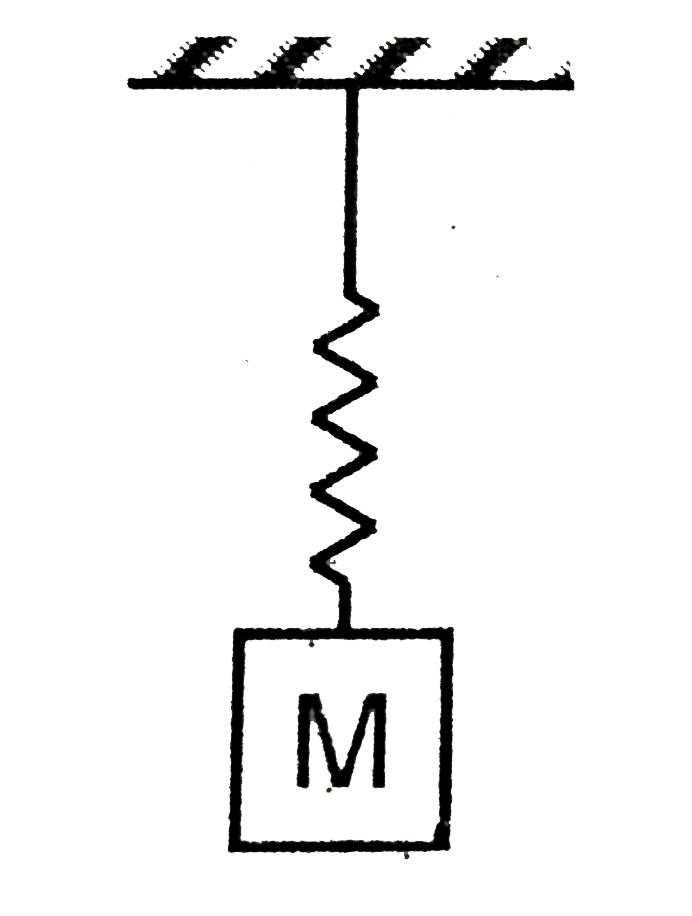 AmgBmg/2C3mg/2D2 mg
AmgBmg/2C3mg/2D2 mg
A block of mass m held touching the upper end of a light spring of force constant K as shown in figure. Find the maximum potential energy stored in the spring if the block is released suddenly on the spring.
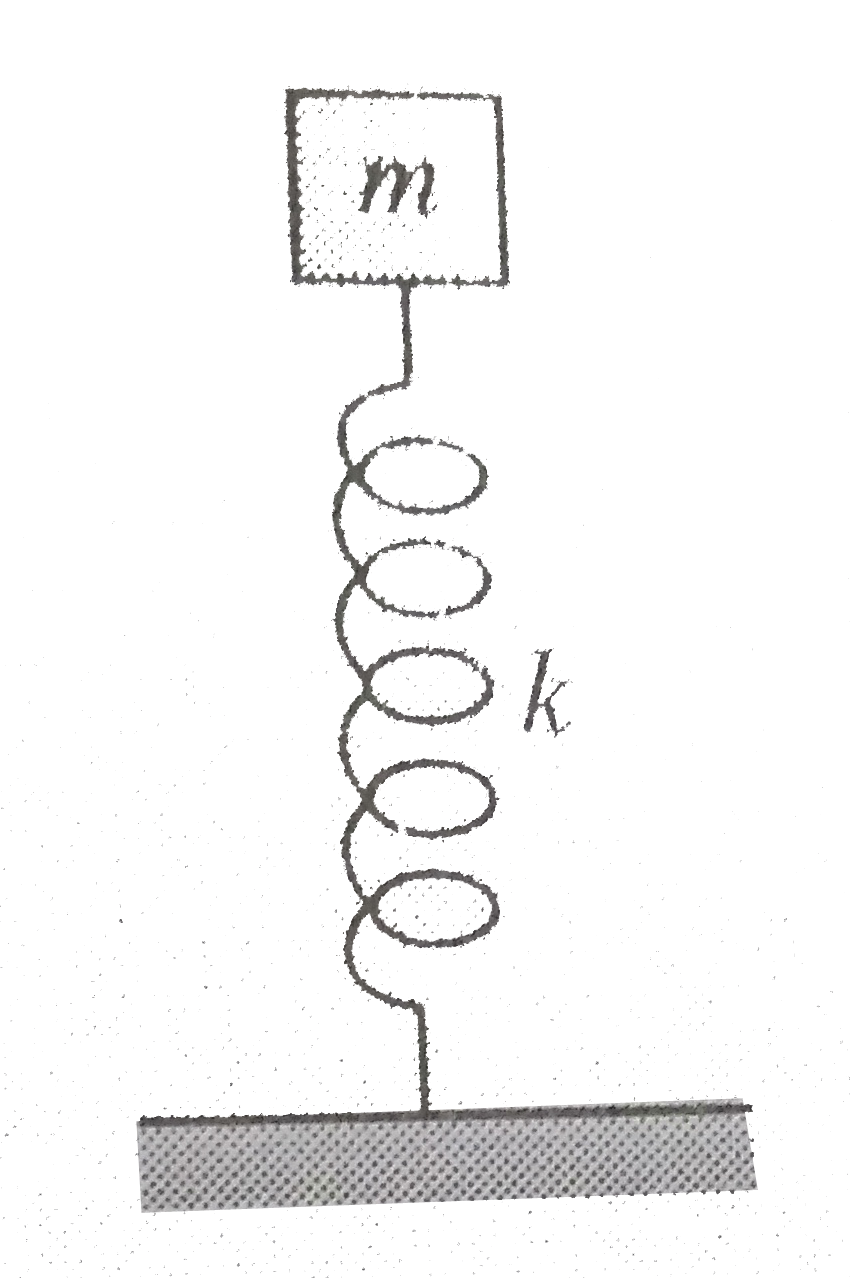 View Solution
View SolutionThe block shown in figure is released from rest. Find out the speed of the block when the spring is compressed by 1 m
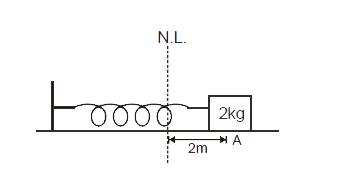 View Solution
View SolutionIn the figure shown masses of the blocks A, B and C are 6kg, 2kg and 1kg respectively. Mass of the spring is negligibly small and its stiffness is 1000 N//m. The coefficient of friction between the block A snd the table is μ=0.8. Initially block C is held such that spring is in relaxed position. The block is released from rest. Find (g=10m/s2).
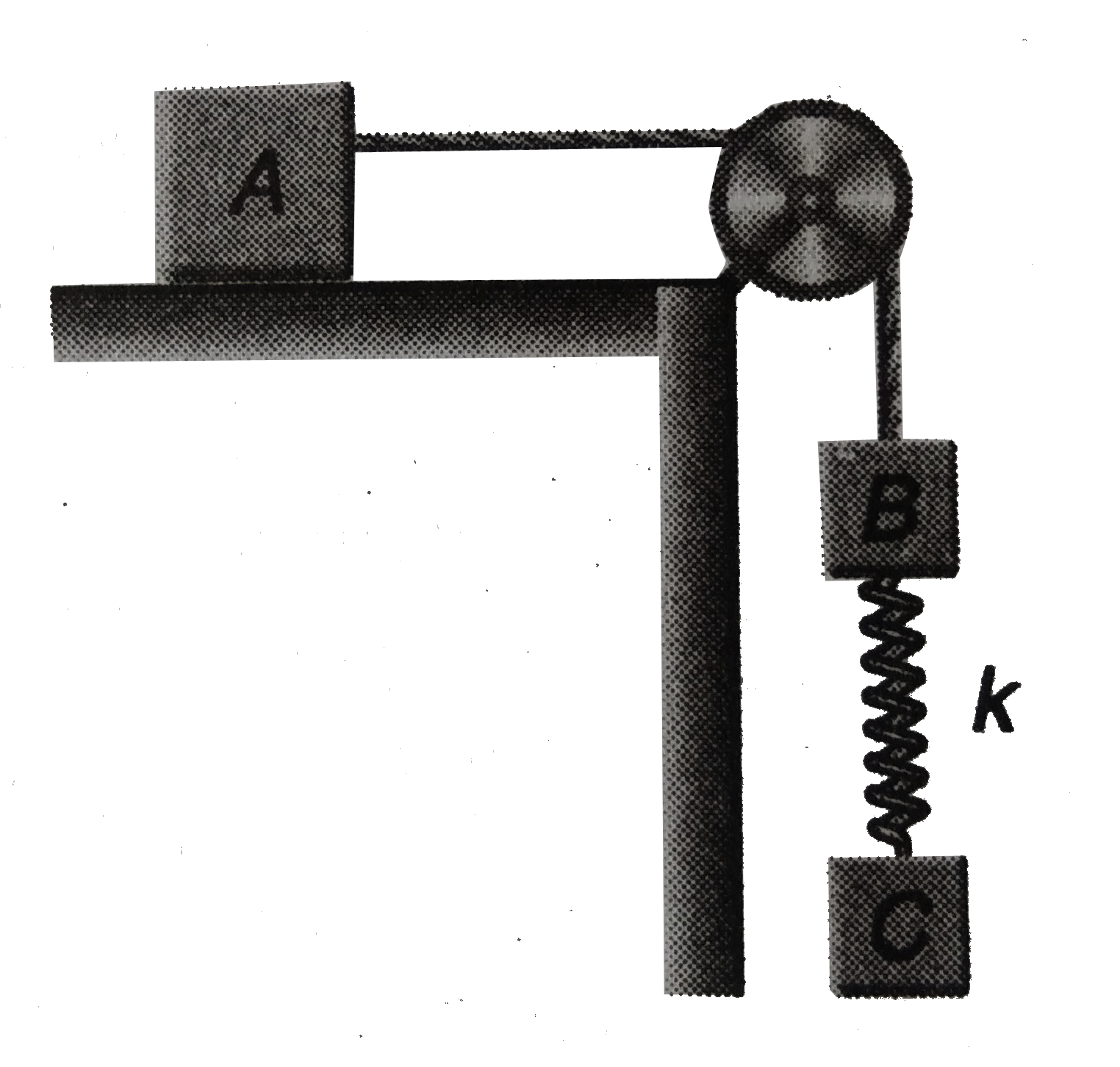
(a) the maximum distance moved by the kinetic C.
the acceleration of each block, when clongation in the spring is maximum.View SolutionInitially mass m is held such that spring is in relaxed condition. If mass m is suddenly released, maximum elongation in spring will be
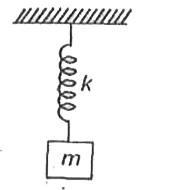 View Solution
View SolutionA disc of mass m is connected with an ideal spring of stiffness k. If it is released from rest, it rolls without sliding on an inclination plane. The maximum elongation of the spring is:
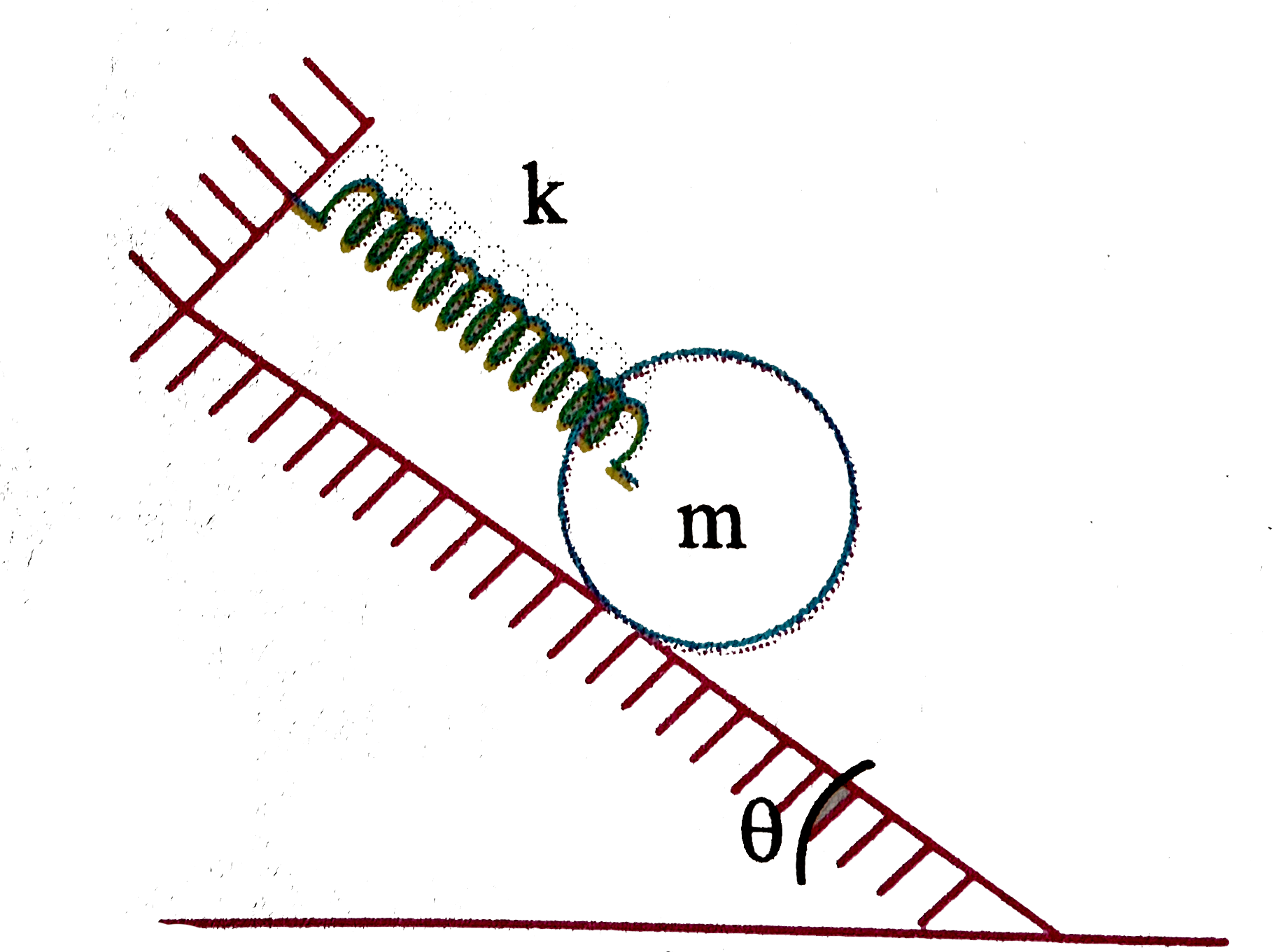 View Solution
View Solution

